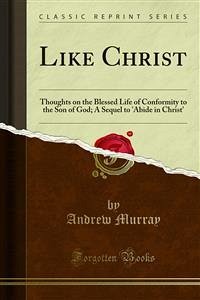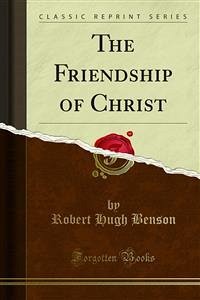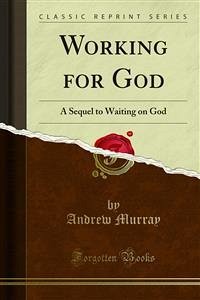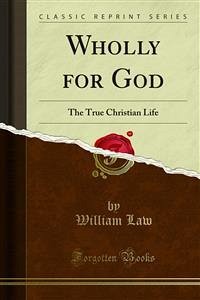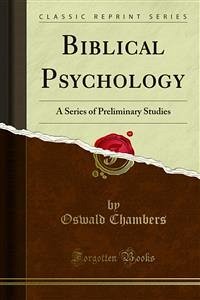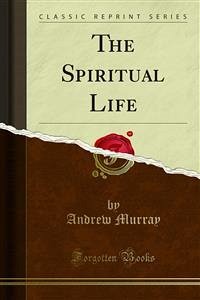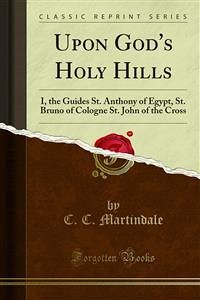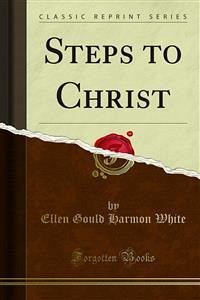Das Andachtsbuch "Like Christ" (deutsch: Nach Jesu Bild) des weltbekannten geistlichen Schriftstellers Andrew Murray bietet 31 geistliche Betrachtungen, also eine für jeden Tag des Monats. Die Andachten sind hervorragend geeignet für die persönliche Stille Zeit vor Gottes Angesicht.
Gemeinsamer
Grundzug aller Andachten ist "das selige Leben der Umgestaltung in das Ebenbild des Sohnes Gottes".…mehrDas Andachtsbuch "Like Christ" (deutsch: Nach Jesu Bild) des weltbekannten geistlichen Schriftstellers Andrew Murray bietet 31 geistliche Betrachtungen, also eine für jeden Tag des Monats. Die Andachten sind hervorragend geeignet für die persönliche Stille Zeit vor Gottes Angesicht.
Gemeinsamer Grundzug aller Andachten ist "das selige Leben der Umgestaltung in das Ebenbild des Sohnes Gottes". Murray stellt das Bild des Sohnes Gottes Jesus Christus dar, der "in allen Dingen seinen Brüdern gleich gemacht wurde", wie es der Hebräerbrief sagt, und in dessen Bild wir verwandelt werden sollen im Anschauen Seines Angesichts. Die Andachten sind geistgeschöpft aus dem Reichtum der Gnade Gottes und der ganzen Heiligen Schrift, und führen wieder hinein in den lebendigen Reichtum der Herrlichkeit Gottes in Christus Jesus.
Die einzelnen Andachten tragen folgende Überschriften (deutsche Übersetzung)
1. Wir bleiben in Ihm
2. Er selbst beruft uns dazu
3. Als der da dienet
4. Er ist unser Haupt
5. Im Erdulden des Unrechts
6. Mit Ihm gekreuzigt
7. In Seiner Selbstverleugungen
8. In Seiner Selbstaufopferung
9. Nicht von dieser Welt
10. In Seiner himmlischen Sendung
11. Als die Auserwählten Gottes
12. Im Tun des Willens Gottes
13. In Seinem Erbarmen
14. Eins mit dem Vater
15. In Seiner Abhängigkeit von dem Vater
16. In Seiner Liebe
17. In Seinem Gebetsleben
18. In Seiner Anwendung der Heiligen Schrift
19. Im Vergeben
20. Indem wir Ihn anschauen
21. In Seiner Demut
22. Mit Ihm gepflanzt zu gleichem Tode
23. Seiner Auferstehung gleich
24. In der Ähnlichkeit Seines Todes
25. Er gab Sein Leben für die Menschen
26. In Seiner Sanftmut
27. In der Liebe Gottes bleibend
28. Geleitet durch den Heiligen Geist
29. In Seinem Leben durch den Vater
30. In der Verherrlichung des Vaters
31. In Seiner Herrlichkeit
Über den Autor:
Dr. Andrew Murray (1828-1917), geboren in Südafrika, gehört zu den herausragenden Gottesmännern der Neuzeit. Mehr als 50 Jahre diente er als Pastor, Evangelist und Konferenzredner, förderte die Missionsarbeit und gründete mehrere christliche Bildungsinstitute. Unermüdlich arbeitete er für die innere Erneuerung der Kirchen und durfte zahlreiche Erweckungen und Bekehrungen erleben. Er verfasste rund 240 Bücher und Kleinschriften, die in viele Sprachen übersetzt wurden. Seine außergewöhnliche und tiefe Einsicht in biblische Prinzipien wurde vielen Menschen in aller Welt zum bleibenden Segen.

